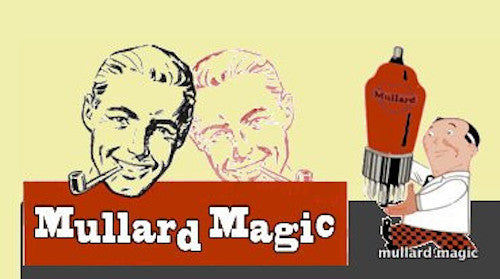
BEEP...BEEP.....BEEP VALVES IN SPACE!
Share
Sputnik 1 or Спутник was the first man made satellite launched by the Soviet Union into an elliptical low Earth orbit on 4 October 1957. The satellite comprised of a 58 cm (23 in) diameter polished metal sphere, fitted with four external radio antennae designed by the Antenna Laboratory of OKB-1 led by Mikhail V. Krayushkin. Each antenna was made up of two whip-like parts of 2.4 and 2.9 meters (7.9 and 9.5 ft) in length. This configuration ensured the transmission of a spherical radiation pattern resulting in an omnidirectional signal of equal power that was not hampered by the satellite’s rotation.

The satellite had a one-watt, 3.5 kg (7.7 lb) D-200r radio transmitting unit inside, developed by Vyacheslav I. Lappo from NII-885 that transmitted on two frequencies, 20.005 and 40.002 MHz. Here's what it looked like: -

Signals on the first frequency were transmitted in 0.3 sec pulses with pauses of the same duration filled by pulses on the second frequency. As you can see from the above photograph it has a beautiful build quality and from the following circuit diagram, a simple yet elegant circuit topology: -

Analysis of the radio signals was used to gather information about the electron density of the ionosphere. Temperature and pressure were encoded in the duration of radio beeps. A temperature regulation system contained a fan, a dual thermal switch, and a control thermal switch. If the temperature inside the satellite exceeded 36 °C (97 °F) the fan was turned on and when it fell below 20 °C (68 °F) the fan was turned off by the dual thermal switch. If the temperature exceeded 50 °C (122 °F) or fell below 0 °C (32 °F), another control thermal switch was activated, changing the duration of the radio signal pulse.
The transmitter was powered by two silver-zinc batteries from a three-core stack designed by the All-Union Research Institute of Current Sources (VNIIT) under the leadership of Nikolai S. Lidorenko. The third battery powered the temperature regulation system. The batteries had an expected lifetime of two weeks, and operated for 22 days. The power supply was turned on automatically at the moment of the satellite's separation from the second stage of the launch rocket.
The satellite travelled at about 29,000 kilometres per hour (18,000 mph; 8,100 m/s), taking 96.2 minutes to complete each orbit and it’s steady beep-beep signals were monitored by amateur radio operators throughout the world. The signals continued for 21 days until the transmitter batteries ran out on 26 October 1957.
Sputnik 1 burned up on 4 January 1958, as it fell from orbit upon reentering Earth's atmosphere, after travelling about 70 million km (43.5 million miles) and having 1,440 orbits of the Earth.
The R7 launch boost rocket core remained in orbit for two months until 2 December 1957:-

It's nice to know that the start of the space race didn't really start the space junk pile - which does exist and is growing by the day, tracked assiduously by those nice chaps at NORAD deep within Cheyenne mountain.
At the most recent count, about 21,000 pieces of space junk larger than 4 inches (10 cm) and 250000 lumps of junk between 1 cm and 10 cm are estimated to circle the planet. There are also approximately 16000000 pieces of debris smaller than a third of an inch (1 cm). Why should we worry about these I hear you say and unless we are going to do a space walk then down here, we shouldn't worry too much. That said, it's sobering to think that in a typical low Earth-orbit, objects travel at 14000 mph and at that speed, a tiny fleck of paint packs the same punch as you would get on Earth from being hit by a WW2 British, 540lb General Purpose Bomb Mark 1 that was travelling at 60mph - and that's without the bomb exploding - ouch!!!!!.
Here's what the current junk pile looks like - can you see that Coke can Tim Peake dropped during his spacewalk around the ISS?

Unfortunately, Mullard Magic doesn't have any space radios for sale, but there are interesting items for sale at
GOODIES & EVEN MORE GOODIES
